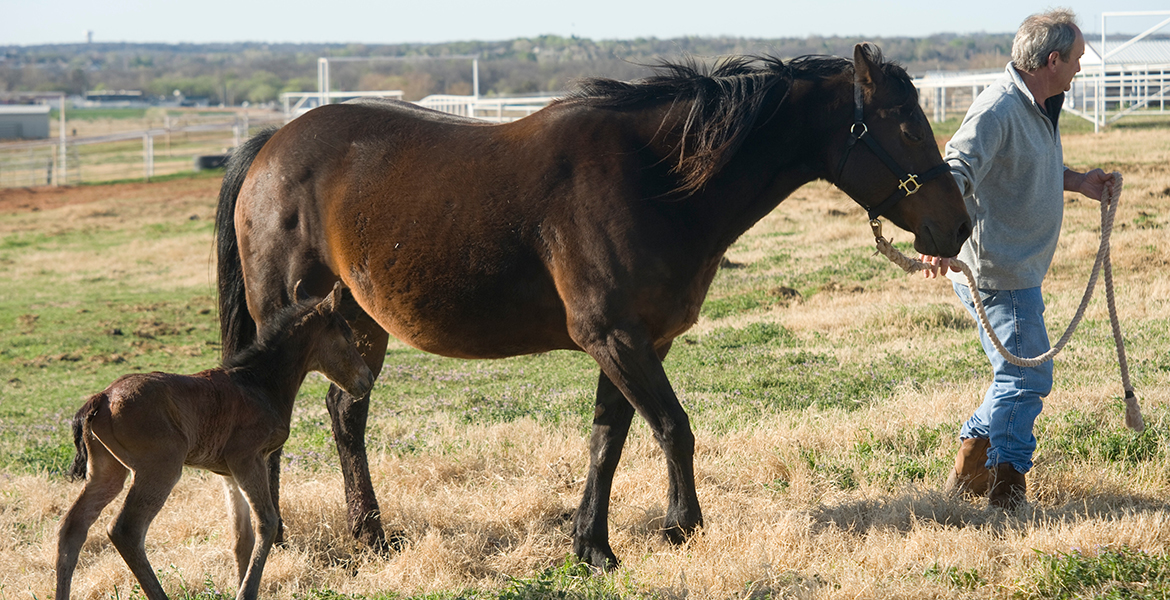
Horse owners urged to plan care during pandemic
Tuesday, March 31, 2020
While the primary concern of the COVID-19 pandemic is for human health, horse owners should have plans in place to ensure proper care of their horses in case of sickness and hospitalization, Oklahoma State University Extension experts said.
“Create a short list of people who can feed, water and keep the horse’s stall and environment clean, and work with them to ensure these basic animal needs are met daily,” said Kris Hiney, OSU Extension equine specialist.
The same is true of exercise and medical resources, she said. Although horses can remain in stalls for days if necessary, the situation is not recommended and could increase the likelihood of colic, respiratory and muscular issues. Don’t wait until the last moment to make arrangements, and remember that people can be forgetful under stress. Trust no detail to someone else’s memory.
“Horses should be easily identifiable by a name on a halter or a stall, or have other identifying features written down as part of instructions detailing expected care,” Hiney said. “Write the instructions down on paper, in a text or email, or provide them in a voice message and send them to those who will be looking after the horses. Better yet, do them all. Redundancy is a good risk management tool.”
Equine owners ideally should have enough feed on hand to last a horse two weeks. Outline back-up plans as well – if grain isn’t available, for example, clarify whether forage is acceptable. The same level of attention is recommended for drinking water and bedding issues.
“Don’t hesitate to go into detail,” Hiney said. “For example, feed instructions for grain and concentrate should include information about how much, how often and the location from where the horse will access the feed. Don’t forget to tell where the grain and concentrate are located if it is not obvious.
“Only stalled horses with no option for turnout truly need to be exercised,” she said. “Be sure to share which horses go out together and which must go out individually.”
Horse exercise instructions should list equipment needs and riding guidelines, including tack to use.
Reinforce the need to wear appropriate safety equipment and practice good horse stewardship. Warn of any animal personality quirks.
OSU Extension Veterinarian Dr. Barry Whitworth said that while instructions for all aspects of horse management are vital, those about medications that will need to be administered are especially so.
“Remember, the person volunteering to help may not have the same level of knowledge as the regular horse manager,” he said. “Most horses are not performing at this time, so owners should stress giving only essential medications. The focus is on maintaining animal health while the horse owner protects his or her own.”
On that point, Whitworth emphasized that all caretakers should wear clean clothes, boot covers and gloves.
Handwashing is vital. Studies show that most animal shelters where handwashing is emphasized have lower disease rates compared with those where workers are lax.
“The last thing needed is to have a stable be quarantined,” Whitworth said.
OSU Extension is one of two state agencies administered by the university’s Division of Agricultural Sciences and Natural Resources and is a key part of OSU’s state and federally mandated teaching, research and Extension land-grant mission.
MEDIA CONTACT: Donald Stotts | Agricultural Communications Services | 405-744-4079 | donald.stotts@okstate.edu
